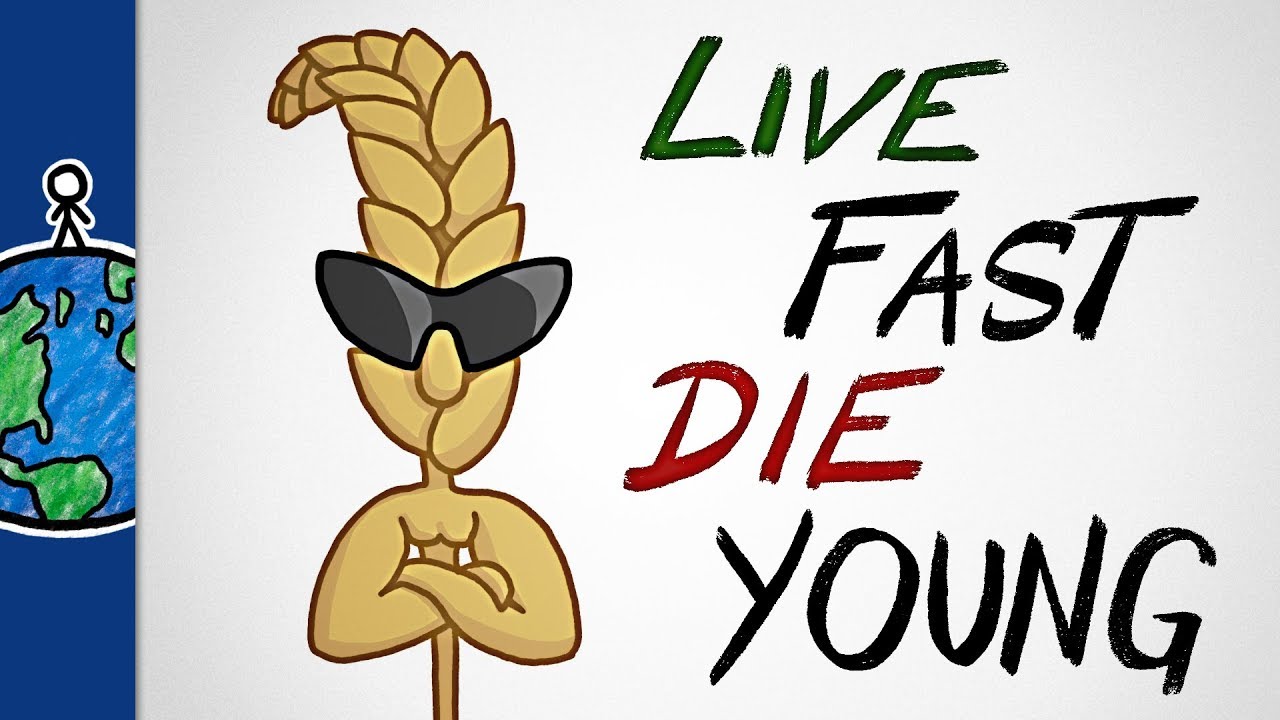To start using Tab for a Cause, go to:
We mostly grow annual plants because they reliably produce energy-rich seeds, which we like to eat.
Thanks to our Patreon patrons and our YouTube sponsors.
___________________________________________
To learn more, start your googling with these keywords:
Annual: a plant that typically lives for a year or less
Biennial: a plant that typically lives for two years
Perennial: a plant that typically lives for multiple years
___________________________________________
If you liked this week’s video, you might also like:
The Case Against Civilization:
_________________________________________
Subscribe to MinuteEarth on YouTube:
Support us on Patreon:
And visit our website:
Say hello on :
And :
And download our videos on itunes:
___________________________________________
Credits (and handles):
Script Writer: Alex Reich (@alexhreich)
Script Editor: Emily Elert (@eelert)
Video Illustrators: Bruno van Wayenburg and Ever Salazar
Video Director: Emily Elert (@eelert)
Video Narrator: Emily Elert (@eelert)
With Contributions From: Henry Reich, Kate Yoshida, Peter Reich, David Goldenberg
Music by: Nathaniel Schroeder:
___________________________________________
References:
Bonser, S. P. (2013). High reproductive efficiency as an adaptive strategy in competitive environments. Functional Ecology, 27(4), 876-885.
Crews, T. Personal Communication, Dec 2017.
Crews, T. E., & DeHaan, L. R. (2015). The strong perennial vision: A response. Agroecology and Sustainable Food Systems, 39(5), 500-515.
Friedman, J., & Rubin, M. J. (2015). All in good time: understanding annual and perennial strategies in plants. American journal of botany, 102(4), 497-499.
Denison, R.F. Personal Communication, Nov 2017.
Milla, R. Personal Communication, Dec 2017.
Pimentel, D., et al. (2012). Annual vs. perennial grain production. Agriculture, ecosystems & environment, 161, 1-9.
Rees, M., & Long, M. J. (1992). Germination biology and the ecology of annual plants. The American Naturalist, 139(3), 484-508.
Reich, P. B. (2014). The world‐wide ‘fast–slow’plant economics spectrum: a traits manifesto. Journal of Ecology, 102(2), 275-301.
Smaje, C. (2015). The strong perennial vision: A critical review. Agroecology and Sustainable Food Systems, 39(5), 471-499.
Van Tassel, D. L., DeHaan, L. R., & Cox, T. S. (2010). Missing domesticated plant forms: can artificial selection fill the gap?. Evolutionary Applications, 3(5‐6), 434-452.
Vico, G. Personal Communication, Nov 2017.
Vico, G., et al. (2016). Trade‐offs between seed output and life span–a quantitative comparison of traits between annual and perennial congeneric species. New Phytologist, 209(1), 104-114.
Westoby, M. Personal Communication, Nov 2017.

